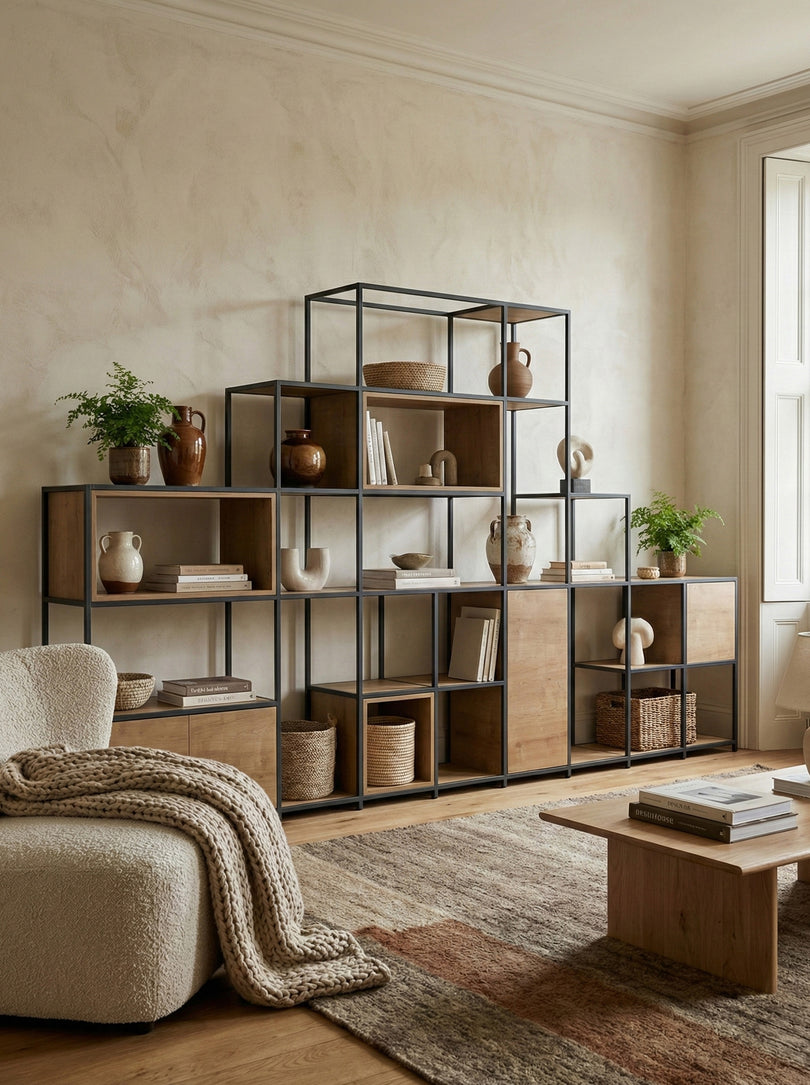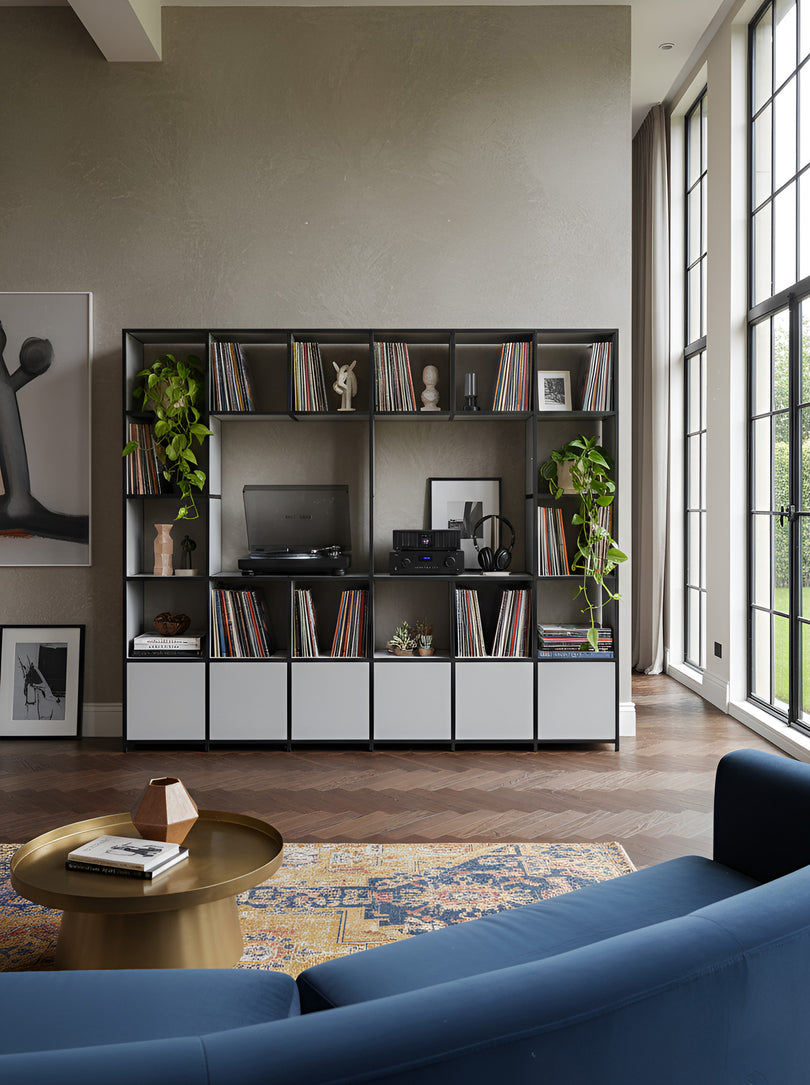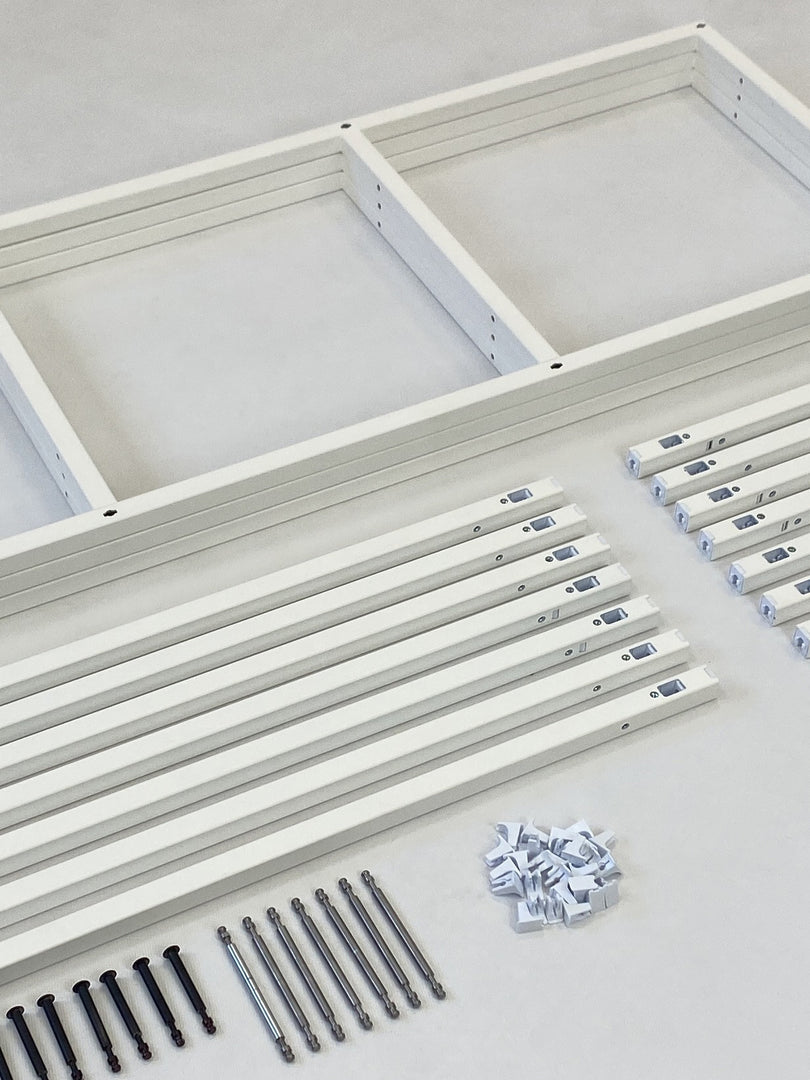For all of us avid bookworms, having a personal home library is at the top of our home decor list. Sure, a designated library room is the dream, but home libraries can come in all shapes and sizes. With limited space, a special nook, a corner of the living room, or even that awkward end-of-hall space will do! The key is to have a place to store your books, display items that inspire you, and a cosy spot to relax and unwind. Just like libraries around the world, your at-home library should be a quiet place for reflection.
Transforming a space in your home into a library is easier than you might think, especially with the flexibility of modular shelves. Whether you're an avid reader or just looking to organise your book collection, we’ve compiled some tips to help you build your dream library.
1. Choose the Right Space
First, decide where you want your home library to be. It could be a dedicated room, a quiet corner, or even a section of your dining or living room. Look for a spot with good lighting, both natural and artificial, to create an inviting reading environment. Consider the flow of the space and how you can create a peaceful area away from high-traffic zones in your home. If you're tight on space, consider using a bookshelf room divider to create your library area. Bookshelf room separators can define a reading nook in a larger room without the need for walls.
 2. Choose the Right Shelving Units
2. Choose the Right Shelving Units
The foundation of any home library is the shelving. Modular shelving units are perfect because they can be customised to fit any space and even rearranged as your collection grows. Choose one of our pre-designed modular bookshelf units, or design your own. Our product configurator offers the flexibility to create a layout that works for you. Whether you need storage for a vast book collection or want to use your bookshelves for records and books, our units can be configured to meet your needs. Consider adding baskets or bins to the shelves for additional shelving storage options, keeping your library area tidy and clutter-free.
3. Plan Your Layout
Before you start designing your shelves, plan the layout of your home library. Consider the height and spacing of each shelf to accommodate books of different sizes. Mix vertical and horizontal arrangements to add visual interest and functionality. If you have a lot of books, we recommend making use of floor-to-ceiling height to maximise storage space. If you would like to use a modular shelving unit to create a bookcase divider, begin to consider how this will work in your space. Bookcase room dividers are perfect for flats or open-plan homes, as they separate spaces while providing ample storage. The grid design allows you to use bookcases to divide a room while maintaining an open feel.

4. Organise Your Books
When setting up your home library, think about how to display your collection attractively. Group books by colour, size, or subject to create visual interest. Use decorative items like vases or framed photos to break up rows of books and add personality to your shelves.
Try stacking some books flat in vertical piles—it’ll make more use of the space and add variety to the visual design. If you’ve collected multiple books from one author, you might consider stacking those books behind others.
Arrange the books in a way that makes sense to you. Common ways include alphabetically, by author, or within genre, so you always know where to find the book you want. For a more decorative approach, you can organise your books by the colour of their spines to create a visually pleasing rainbow effect. Or, arrange books by size, placing larger books at the bottom and smaller ones at the top to create a balanced look. Keep in mind that while this might make things interesting to the eye, it might make finding books harder down the road.
5. Create a Cosy Space
No home library is complete without a cosy spot to sit and read. Choose a comfortable chair or a small sofa that complements your library's style. Add some soft cushions and a throw blanket to make it even more inviting. If space allows, consider adding a small table for your coffee, tea, or reading glasses. Consider the lighting in your space—natural light is ideal, but a combination of task and ambient lighting will ensure you can read comfortably at any time of day.

7. Personalise Your Space
Finally, make your library truly yours by adding personal touches. Don't limit your home library to just books. You can use Bookshelves for records, a room divider with shelves to display plants, artwork, or collectibles. Incorporate textures and colours that reflect your style, making the space a reflection of your personality. A well-placed bookshelf unit can serve as a backdrop for a reading chair, creating a multifunctional space that invites you to linger and enjoy your surroundings.
8. Keep It Organised
Maintaining an organised library is key to its functionality and aesthetic. Regularly go through your collection to remove books you no longer need or want. Consider donating them or giving them to friends and family. Keeping your library tidy will ensure it remains a welcoming and inspiring space.
Creating a home library with modular shelves is a rewarding project that can transform any space into a book lover's paradise. By choosing the right shelving units and using bookshelves as room dividers, you can create a functional and stylish library that meets all your needs. Happy reading!

















